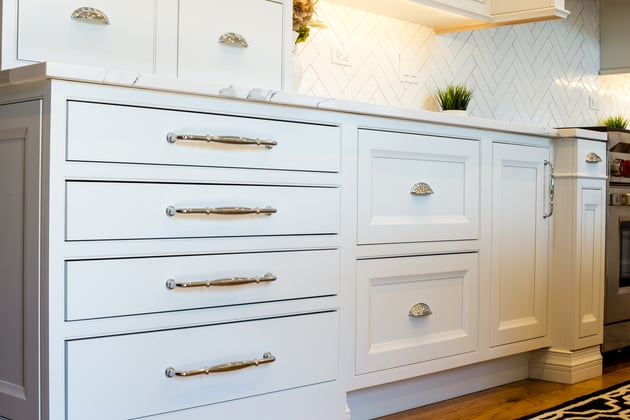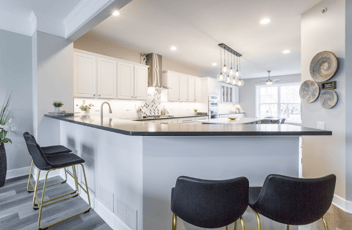Designing an Eat-In Kitchen
As trends continue to change, there is still one feature that remains popular for homeowners...

2024 home design trends are all about breaking barriers and creating out-of-the-box spaces. One trend that has gained popularity over the years is mixing metals. Mixing metals adds depth and interest to your kitchen, making it stand out. But where do you begin? With so many different types of metals and finishes, deciding which ones to combine can be overwhelming. The following suggestions are a great guide to mixing metals in your kitchen design.
Before you start combining metals, choosing a dominant metal that will act as a foundation for your design is essential. While picking a primary metal, it is important to choose one you love and that complements your overall aesthetic. Some popular dominant metals include stainless steel, brass, and copper. Having a dominant metal allows your secondary ones to become a surprise element that pulls people’s eyes.
When choosing metals to mix, consider the metals' warmth and coolness. Warm metals such as brass and copper add a cozy and inviting feel to your kitchen, while cool metals like chrome and nickel can add a sleek and modern touch. This contrast brings a vibrant energy to the space. Mixing warm and cool metals can create a balanced and harmonious look.
While mixing metals can add interest to your kitchen, it’s vital to ensure that the finishes work well together. For example, if you choose a shiny chrome finish for your dominant metal, you may want to pair it with brushed nickel or matte black finishes for an overall cohesive look. If you’re unsure of which finishes to mix, try sticking to one finish for your dominant metal and mixing the finishes of the smaller accents.
If you’re hesitant about mixing metals, try incorporating small accents. The accents could be in the form of cabinet knobs, drawer pulls, or lighting fixtures. Mixing metals in smaller accents can add interest without overwhelming your design.
When mixing metals, it’s essential to consider your overall color scheme. If your kitchen has a lot of warm tones, such as wood and beige, you may want to incorporate warm metals like brass and copper. If you have a lot of cool tones, such as white and gray, you may want to integrate cool metals like chrome and nickel. Adding metals that complement your color scheme can tie your design together.
Mixing metals in your kitchen design can add depth and interest to your space. By following these tips, such as starting with a dominant metal, mixing warm and cool metals, matching finishes, incorporating small accents, and considering your color scheme, you can create a cohesive and dynamic design that you’ll love for years to come. For more design tips and tricks, subscribe to our newsletter.


As trends continue to change, there is still one feature that remains popular for homeowners...


The modern kitchen is the dream of many homeowners. Whether you are looking to create more space...
Leave a Comment